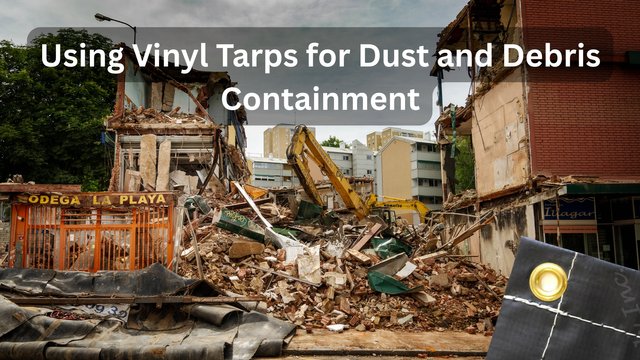Using Vinyl Tarps for Dust and Debris Containment
Dust and debris are inevitable byproducts of construction, renovation, and industrial projects. Left unchecked, they can create safety hazards, damage equipment, and spread into areas that should remain clean. Containing these materials is essential for maintaining a safe, organized, and compliant worksite. One of the most effective and versatile tools for this task is the vinyl tarp.
Vinyl tarps are durable, waterproof, and easy to install, making them ideal for containing airborne dust and loose debris. They’re used across industries—from construction and manufacturing to disaster cleanup—because they offer a reliable barrier against particles and mess. In this guide, we’ll explore how vinyl tarps help keep worksites clean, safe, and efficient.
1. Why Dust and Debris Containment Matters
Dust and debris aren’t just messy—they can also be harmful. Fine dust from materials like drywall, cement, or wood can linger in the air, posing respiratory risks to workers. Larger debris, if not managed, can become a tripping hazard or damage nearby property.
For many industries, dust control is also a matter of compliance. Regulatory agencies like OSHA set standards for workplace air quality, and failing to manage airborne particles can result in fines or shutdowns. By using vinyl tarps for containment, you can reduce airborne hazards, prevent property damage, and maintain a cleaner, safer work environment.
2. How Vinyl Tarps Work as Containment Barriers
Vinyl tarps are made from heavy-duty, coated fabric that’s resistant to tears, moisture, and abrasion. Their smooth, non-porous surface prevents fine dust particles from passing through, unlike some lightweight plastic sheets that can develop holes or rips.
When hung as temporary walls or draped over work areas, vinyl tarps form an effective shield that traps dust and prevents it from migrating to other spaces. They can also be secured to scaffolding, ceilings, or temporary frames, creating enclosed work zones that keep debris contained for easy cleanup.
3. Common Applications for Vinyl Tarps in Containment
Vinyl tarps can be adapted to many different dust control needs, including:
Construction site partitioning – Creating temporary walls to isolate dusty activities like cutting, grinding, or sanding.
Renovation projects – Protecting occupied areas of a building while work is being done in another section.
Industrial manufacturing – Separating clean production areas from processes that generate debris or dust.
Demolition work – Containing falling debris and preventing dust clouds from spreading to neighboring properties.
Disaster cleanup – Isolating damaged or contaminated zones during cleanup and restoration efforts.
Their versatility allows them to be reused across multiple jobs, making them a cost-effective investment for contractors and facility managers.
4. Best Practices for Installing Vinyl Tarps for Containment
To ensure maximum effectiveness, vinyl tarps should be installed correctly:
Measure the area – Make sure your tarp is large enough to cover the full space, with extra length to overlap at edges.
Secure tightly – Use bungee cords, zip ties, or clamps through the grommets to prevent gaps where dust could escape.
Seal seams – Overlap multiple tarps and seal joints with tape or fasteners for a continuous barrier.
Anchor the bottom – Weight down or tape the lower edge to prevent dust from escaping underneath.
Allow for access – If workers need to move in and out, create a flap or zipper entry to maintain containment while allowing passage.
Following these steps helps maintain a strong and reliable dust barrier throughout the project.
5. Maintenance and Reuse of Vinyl Tarps
One of the advantages of vinyl tarps is their reusability. After a project, simply remove the tarp and shake off any loose debris. For a deeper clean, wipe it down with mild soap and water to remove dust buildup. Always allow it to dry completely before folding and storing to prevent mold or mildew.
Properly stored in a cool, dry location, vinyl tarps can last for years, providing dependable dust containment across many different projects. Their durability and resistance to wear mean they can withstand repeated handling, making them an environmentally friendly alternative to single-use plastic sheeting.
Conclusion
Vinyl tarps are a practical, durable, and effective solution for dust and debris containment in construction, renovation, and industrial environments. By providing a reliable barrier, they help protect workers’ health, maintain compliance with safety standards, and keep surrounding areas clean.
Whether you’re partitioning a workspace, covering machinery, or sealing off a demolition zone, vinyl tarps offer a versatile way to control mess and keep projects running smoothly. With proper installation and care, they can serve as a long-lasting, reusable tool for keeping dust and debris exactly where they belong—out of the way.
